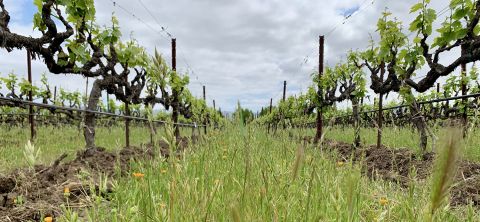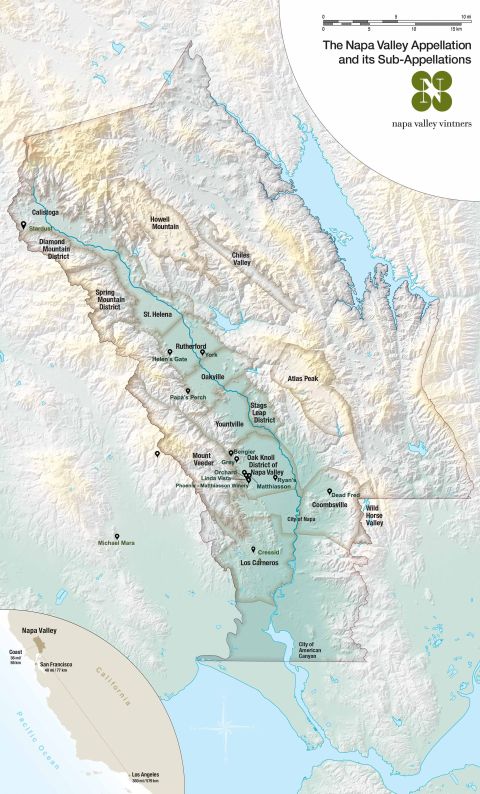Matthiasson, Linda Vista Chardonnay 2022 Napa Valley

An electric Chardonnay made from 35-year-old vines in Napa Valley at a fair price.
Some wines follow you around your whole life.
At 21 years old, freshly legal, I walked into a tiny wine shop. On display was a beautiful pale pink wine with a white label covered with what I interpreted as a pile of blue and grey paperclips (I had never seen pruning shears). I took it home and drank it on the porch with yellow heirloom tomatoes and purple basil. It was exquisite.
A year later, living in a different city, I walked into a wine shop and, chatting with the shop owner, I saw a jumbled label out of the corner of my eye. Without excusing myself from the conversation I walked over to the shelf. The label was aquamarine, and the paperclips looked more like barbed wire, but I was fairly certain it was the same winery. Matthiasson – Ribolla Gialla, the label read.
‘Do these people make a rosé?’ I asked the shop owner excitedly.
‘The Matthiassons? Of course. But that one’s a white made like a red – they ferment it on the skins. It’s good.’
Off I went. Another revelation – lemon peel, chamomile and salt, with a bit of tactile grip – perfect with pasta alle vongole (see Alder’s review of the 2022).
Years later, when I arrived in Napa as a harvest intern, some of the only local wines I could afford were from the Matthiassons, and theirs remains the only wine club I have ever joined, not just because their prices are fair but because their portfolio is always interesting (25 different varieties with many lesser-known ones), the wines are almost always excellent and, as far as human beings go, the Matthiassons themselves are unexceptionally exceptional – which is to say they are normal folks making huge contributions to the world of wine.
Steve Matthiasson and Jill Klein Matthiasson came from agriculture and academia. They met in an organic orchard during their time at UC Davis. Jill did her Master’s degree on cover cropping; Steve did his on pest management. Three years later, in 1999, he co-authored the California manual on sustainable vineyard practices.
The Matthiassons hold a deep belief that sustainable agriculture is capable of saving the world and the communities who live on it. They’ve been consulting on organic farming since long before they purchased their first vineyard in 2006 and have continued to advise others as well as farm their own land. Because of where they’re based – in Napa Valley, where premium wines regularly sell for upwards of $200 – they could charge more for their wines and still be competitively priced – but they don’t. They maintain the belief that their wines should be priced within reach of purchase for those who work around them; they want only that they can pay their people and live comfortably. In everything from their partnership with the 280 Project (where they facilitate the hands-on educational experience for a six-month Viticulture Fellowship Program) to their acquisition of their winery property through negotiations that allowed the former owner to continue living on the property (and allowed the Matthiassons to pay a lower price), they seek to show people that the sustainable farming community is resilient. ‘Sometimes there is such a thing as a win-win’, Steve Matthiasson reminded me when I visited him during Premiere Napa Valley a few weeks ago.
While I enthusiastically recommend the entire Matthiasson range, there was one wine that particularly stood out to me on my recent visit – the Linda Vista Chardonnay 2022.
After a morning spent tasting current-release Petite Sirah, the wine did more for me than any espresso could have. It crackled with energy, racing down my palate with spine-tingling acidity and reaching into the far corners of my mouth to clear out any residual tannins. It left a lingering flavour of tangy lemon kefir and golden apple, with subtle grassiness and a hint of butterscotch. The oak was well integrated, more apparent in the wine’s roundness of texture than in flavour. I found myself contemplating what would happen if I knicked the bottle, abandoned my tasting itinerary, and ran off to hide in the lush shoulder-high cover crop.
The vineyard that this wine comes from is located near the Matthiasson’s winery in the western part of the Oak Knoll AVA. It was originally planted in 1989 by Beringer and those vines are still alive and well – a contributing factor in the concentration and depth of this Chardonnay. Concentration is also aided by the fact that this is the 2022 vintage, one of the driest on record, and it yielded a minuscule crop. The site was somewhat helped along by well-covered clay soils (cover crop helps keep soils from drying out and clay is fairly adept at retaining moisture). While their vineyards aren’t dry-farmed, Steve describes his philosophy on irrigation as being like rock climbing: ‘Dry-farming is like free soloing. Constant irrigation is like being pulled up by a rope. But you can be roped in and still climb the wall.’ Needless to say, the Matthiassons are conscientious irrigators.
Harvest for this wine happens in several passes with early picks contributing acidity and later picks the body and flesh of the wine. Vinification is simple: the grapes are whole-cluster pressed and the must undergoes fermentation in neutral barrel with no added yeast. The wine is left on lees, is not racked and is minimally stirred. Two-fifths of the barrels are allowed to undergo malolactic conversion to soften acidity, and the rest are sulphured after primary fermentation in order to retain some of the leaner and more refreshing malic acid. At 12.5% alcohol and with no new oak, I would think that even ABCers (a term coined by servers in the early 2000s who, when asking a customer what they’d like to drink, would get the answer ‘anything but Chardonnay’) could find something to love with this wine.
In the US the wine is available direct from Matthiasson for $38, and Wine-Searcher.com shows wide availability across the country.
In the UK the 2022 is imported and distributed by Nekter Wines (retail £53); Lay & Wheeler has it listed for £41.61.
For many more recommendations for Matthiasson wines, see our tastings note database.
Become a member to view this article and thousands more!
- 15,408 featured articles
- 275,024 wine reviews
- Maps from The World Atlas of Wine, 8th edition (RRP £50)
- The Oxford Companion to Wine, 5th edition (RRP £50)
- Members’ forum
- 15,408 featured articles
- 275,024 wine reviews
- Maps from The World Atlas of Wine, 8th edition (RRP £50)
- The Oxford Companion to Wine, 5th edition (RRP £50)
- Members’ forum
- 48-hour preview of all scheduled articles
- Commercial use of our wine reviews



